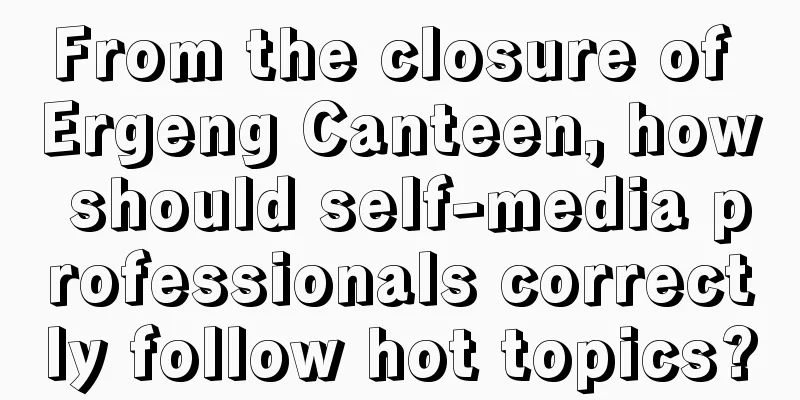Amazing! The colored lights in the field actually hide such a big secret?

|
When we walk along the country roads, we sometimes find colorful lights hanging in the fields. Are they used to provide lighting for farmers? The lights in the fields are very useful. They are the farmer's "secret weapon". Indeed, these colored lights are specially used to lure and kill pests, and are called "insect-luring lights." "Insects chirp in the depths of rice fields," "Insects chirp in the high and low grass fields," "Insects sing in the desolate wild fields"... Since ancient times, when it comes to "fields," it seems that we have to mention "insects." There are beneficial insects and harmful insects in the fields. Pests are the "mini destroyers" in the fields. They will wait for an opportunity to move, rise up in groups, eat crops, and cause serious damage to crops. In order to eliminate pests, people have used their brains a lot. Nowadays, scientists have mastered a variety of pest control technologies, and hanging colored lights in the fields is one of them. Image source: Pixabay Why do colored lights attract pests? You must have heard of "moths flying into flames", right? Professor Lei Chaoliang's team at Huazhong Agricultural University has uncovered the mystery behind this phenomenon through in-depth research and the use of modern biotechnology. They have proposed the "light stress theory": moths are accustomed to being active at night. When they see fire or artificial light, they will have a physiological stress response, produce special chemicals in their bodies, lead to enhanced energy metabolism, and be in a state of continuous excitement. As a result, they will fly around and pounce on the light source. In addition to moths, many insects are natural "light chasers" and often collide with light sources. After Professor Lei Chaoliang's team proposed the "light stress theory", they began to study light-induced control technology and developed different types of insect-attracting lamps. Among them, the wind-suction trap-type solar-powered insect-attracting lamp has a high efficiency in killing pests and is very popular among farmers. Why is this insect-attracting lamp so popular? Because it has four major advantages: high efficiency, precision, safety and intelligence. Let's take a look. Let's talk about "efficiency" first. In addition to using light, Professor Lei Chaoliang's team also adopted a wind suction and baffle design. A trematode air duct is set under the lamp, with an air inlet at the top and a fan at the bottom. When the fan blades rotate quickly, they drive air flow, thereby generating suction. The insects attracted by the light will be sucked into the insect collection box under the fan as soon as they reach the baffle. The upper part of the insect trematode air duct is thicker than the middle part, making the middle part a relatively narrow area with high wind speed, making it difficult for the insects to escape, so the trapping efficiency is very high. Let's talk about "precision". Traditional insect-attracting lights have a single wavelength and the trapping target is not clear enough. Not only can they not attract all the pests to be eliminated, but they will attract some harmless or even beneficial insects. Each insect has different sensitivity to different colors of light. In order to make insect traps that can attract pests in a targeted manner, scientists have been conducting research, screening out the sensitive wavelengths of more than 70 important agricultural pests, accurately adjusting the proportion of lamp materials, and creating special light sources that vary according to the pests. In this way, farmers can place insect traps of corresponding colors for different pests, whether in rice fields, wheat fields, soybean fields, corn fields, etc. Next is "safety". Traditional insect traps are equipped with high-voltage power grids, which will "kill" all insects that approach without any discrimination. Wind-suction traps use air ducts instead of high-voltage power grids, and also have escape devices specially designed for natural enemy insects. Based on the differences in behavior between target pests and natural enemy insects, scientists have reserved climbing space above the insect collection box of the insect trap, as well as narrow slit or hole-type escape doors of different sizes to give natural enemy insects a chance to escape. Finally, there is “intelligence”. Although the insects’ behavior of flying towards lights is not very controlled, it is not completely random. If you study it carefully, you can still find patterns. Different insects fly to lights at different times at night. Currently, scientists have summarized the peak times for nearly 100 important crop pests to fly to lights. For example, the rice pest brown planthopper usually flies to lights between 8 and 11 p.m. Based on the patterns of insects' behavior in flying towards lights, scientists have developed an intelligent remote-controlled switch light system for insect-attracting lights with multiple functions. With this system, the insect-attracting lights will not be on all night, but will be lit mainly during the peak period when pests fly towards the lights, thereby significantly improving the insect catching efficiency of the insect-attracting lights, reducing the probability of natural enemies of insects flying towards the lights, and saving energy. Image source: Pixabay In addition to using lights to lure and kill pests, what other good ways do scientists have to control pests? Scientists have many methods, such as the sticky insect board (ball) trapping method and the insect pheromone trapping (disorientation) method. The sticky insect board (ball) trapping method is relatively simple. Scientists have found that insects, like us humans, also have their own preferred colors, such as aphids like yellow, thrips prefer blue, citrus fruit flies prefer green, and so on. Therefore, we can use yellow sticky insect boards to trap aphids, blue sticky insect boards to trap thrips, and green fly traps to trap citrus fruit flies. The sticky sticky insect board (ball) is simple to make, low in cost, easy to use, and has a good effect in preventing and controlling pests. The insect pheromone trapping (disorientation) method is not complicated. Studies have found that in order to attract the opposite sex of the same species, insects will release volatile chemical signal substances, which are called sex pheromones. At present, there are hundreds of insect sex pheromones that people can use, and the main targets are lepidopteran pests. The sex pheromone trapping method is to place a certain number of traps in the field to lure and kill adult pests to prevent them from reproducing offspring; the sex pheromone disorientation method is to release a large number of sex pheromones within a certain range to interfere with adult pests, so that they cannot find the opposite sex of the same species, which can also prevent them from reproducing offspring. Using insect traps, sticky insect boards (balls) and insect pheromones to kill pests will not cause damage to the environment. In the future, scientists will continue to research and develop more advanced and environmentally friendly green pest control technologies, so that farmers can harvest more safer and higher-quality agricultural products. Source: Chongqing Industry-University-Research Cooperation Promotion Association Review expert: Xu Minglu, researcher at Chongqing Academy of Agricultural Sciences Statement: Except for original content and special notes, some pictures are from the Internet. They are not for commercial purposes and are only used as popular science materials. The copyright belongs to the original authors. If there is any infringement, please contact us to delete them. |
>>: Sweet autumn starts with chestnuts, and this "hybrid" is the most unique way to enjoy chestnuts!
Recommend
Many people are not aware of the hidden dangers of small sunshades, hot water bottles, and electric blankets...
The recent weather No long johns I can't stop...
2019 Internet Marketing Promotion Tips!
With the gradual improvement of current Internet ...
It looks good, but you can’t touch this kind of jellyfish easily!
Do you know how to do the "Jellyfish Hand Ge...
Reminiscence! Translating “software” into “软件” was his masterpiece
Author: Hu Minqi He is a pioneer and trailblazer ...
APP channel promotion: How to conduct channel evaluation efficiently?
How can channel acquisition practitioners elimina...
Use the pyramid principle to operate your product well!
During the Spring Festival, I used my free time t...
The Origin of Qixi Festival Story Summary Qixi Festival Cowherd and Weaver Girl Story Summary
The Qixi Festival, a festival for begging for cle...
2020 Zhihu operation and promotion strategy!
I think Zhihu operation is just one of the channe...
Looking at Western science fiction from the popular American TV series "Westworld": the evolution of human view on science and technology
The hit TV series "Westworld" has been ...
How to optimize headline information flow ads?
Whether it is operated by Party A or Party B, in ...
APP front-line practical summary: How to operate a product line externally from 0 to 1?
Before I start writing, let me explain my backgro...
What is really difficult?
Source: Dr. Curious Original title: Teach you how...
Figure out these 8 questions and save 50% of your advertising and marketing budget!
The content discussed in this article is applicab...
Chinese scientists have discovered a new drug for the treatment of COVID-19! Can cephalothin really cure COVID-19?
Recently, a new drug for the treatment of COVID-1...
WeChat 7.0.9 beta update: Public account name is displayed when forwarding text and picture messages
On November 22, WeChat 7.0.9 beta version was upd...









